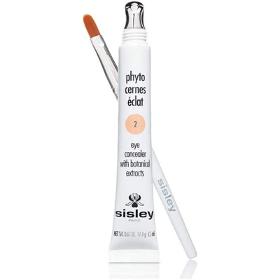- europages
- >
- COMPANIES - SUPPLIERS - SERVICE PROVIDERS
- >
- extract
Results for
Extract - Import export

LISINE EPSTEIN COSMETICS BV
Belgium
Thanks to a new and powerful anti-aging extract Beauty Express 24h is one of the most advanced and efficient anti-wrinkling treatments of today. It appears as if the “plumping” ingredients, being Phytokine® and Pseudocollagen®, fill up the wrinkles from the inside. The skin’s structure is firmer and all tissues regain their compactness and elasticity. The skin is more vital, younger and optimally hydrated. The creamy texture assures a silky soft and comfortable feeling for your skin, both by day and at night. Beauty Express 24h is a day and night cream all in one and should be applied in the morning and the evening on a cleansed skin. In a very short term, Beauty Express 24h assures visible results and is recommended for all women aged 35 and older.
Request for a quote
LISINE EPSTEIN COSMETICS BV
Belgium
Astringent tonic with witch hazel extracts, mint, mushroom extract and alcohol. This tonic restores normal secretion of the skin and is recommended for oily and acne skintypes. Use: Every morning and evening after cleansing.
Request for a quote
PROGENUS
Belgium
Kits FastScreenTM: Animal DNA detection kit, suitable for use on production sites. This innovative kit can be used on production sites and can detect the slightest trace of animal DNA in raw meat or processed products. There are four types of FastScreen: for detecting beef, horse, chicken or pork. USP: Result in less than one hour More sensitive than PCR (<0.0001%) No technical expertise required Minimal equipment, all contained in a single case Kits EasyFastTM: Animal, plant or micro-organism DNA detection and quantification kit, only for laboratory use. The most sensitive DNA kit on the market (0.0001%)! Designed to make your life easier with a single mastermix for all reagents. Simply add your DNA samples. There are four types of EasyFast: DNA extraction, micro-organism detection, animal species detection and plant species detection.
Request for a quote
RESCO
Belgium
Dairy cow's milk production is determined to a large extent by the healthiness of the udders. Therefore, dairy farmers must pay the necessary attention to keeping "the production facilities" healthy to prevent subclinical or clinical mastitis. It is generally accepted that subclinical mastitis occurs when the somatic cell count is over 200.000, even without symptoms [1]. The damage caused by mastitis is not small. The average cost of clinical mastitis varies between studies. In the USA the average cost of a case of clinical mastitis in the first 30 days in lactation is a whopping 444 euros [2]. In The Netherlands, the economic losses of a clinical case were calculated as 210 euros [3]. A Swedish study looked at both clinical and subclinical mastitis. The cost of clinical mastitis was 275 euros per case, while the cost of subclinical mastitis averaged on 60 euros per case [4]. Although the cost of a case of subclinical mastitis is lower, we should not forget that subclinical mastitis
Request for a quote
ILANGA NATURE
Belgium
All kinf of traditionals spices, spices discoveries, in different formats for retailers, Horeca and professionnals

ILANGA NATURE
Belgium
Since we need salt every day, we might as well choose the best. We offer plain coarse salt and fleur de sel or mixed with the most delicious spices from Madagascar. Contact us for more informations

ILANGA NATURE
Belgium
You are a big pepper aficionado? Ilanga Nature beckons you to Madagascar’s type. This black peppercorn is a real little culinary treasure turning all your preparations into a culinary masterpiece. Its pungent notes go well with meat, vegetables and seafood dishes.

ILANGA NATURE
Belgium
Box of Pink Berries in Bulk 10Kg Box of 20 bags of Pink Berries 500g Pink Berries 500g

ILANGA NATURE
Belgium
Poids Brut : 175gr Poids Net : 175gr Conditionnement : Transparent bag

DE SMET ENGINEERS & CONTRACTORS
Belgium
De Smet Engineers & Contractors has been involved in all steps of the production of vegetable oils from oilseeds crushing for the construction of Edible Oils Plants; in this article you will find a more detailed understanding about the process of vegetable oil extraction: First step: Preparation of the oil containing material prior to solvent extraction Cleaning and Drying The plant feedstock must be cleaned so that foreign matters are removed. This applies particularly to sand/silicate and iron which may damage the preparation plant equipment. For some seeds or for some processes the incoming material moisture must be controlled and adjusted for better efficiency of subsequent operations. Mechanical preparation Most of raw materials needs to broken to reduce the particle size to ensure proper cooking and flaking. They are then heated in cooking / conditioning equipment and their moisture further controlled in addition to be softened before the next mechanical operations. After cooking, heated grits are flaked so that the oil cells are broken and the oil more readily available for further solvent extraction or mechanical pressing. Pressing Oilseeds containing above 20 to 25% (rapeseed, sunflower seeds, cottonseeds...) are generally pressed mechanically in order to extract most or part of the oil available in the feedstock. This operation is done through full pressing for maximum oil recovery leaving up to 5 to 10% in the final cake which is marketed as such or through a low pressure pre-pressing operation producing a cake with higher residual oil content which is then recovered in the solvent extraction plant. Dehulling Oil extraction plants produce a solid finished product in addition to the extracted oil; this product (cake or meal) is normally used as an important component for animal feed recipes. Depending on the meal destination, its protein content often needs to be increased and its fibre content minimized. Such characteristics are generally achieved through decortication or dehulling operations that separate the outer part of the feedstock before extracting the oil. Second step: Solvent extraction of the material suitably prepared Extraction In the solvent extractor, solids (Flakes from the flaking machines or cakes from the pre-presses) are conveyed through the equipment while a mixture of hexane and oil (miscella) is sprayed counter-current. The extractor produces therefore deoiled solids containing solvent and miscella. Desolventization Deoiled solids coming out of the extractor are conveyed to a dedicated equipment that completely removes the remaining solvent while preserving the meal quality: the desolventizer. This apparatus is usually combined with additional sections for drying and cooling the meal to the required storage and market parameters. Miscella distillation Solvent contained in the miscella is completely removed under vacuum and optimum temperature for preserving oil quality. The solvent from the distillation as well as the one removed at meal desolventization stage are then recycled to the extractor. Solvent recovery Since the air entering the process together with material fed to the extractor is laden with solvent when it is removed from the plant it first pass through a specially designed absorption column to limit emission to an acceptable level. Meal treatment The extracted meal is often subject for further treatment, including grinding to obtain the required granulometry or pelletizing to reduce its volume during transport.
Request for a quote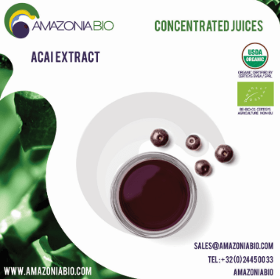
AMAZONIA BIO
Belgium
Organic Certified Açaí Clarified Extract Concentrated is obtained from selected wild harvested fruits submitted to a natural clarification and concentration process through a proprietary patent process. No added sugar, coloring, or preservatives. Benefits: * Combats premature aging and heart disease * Helps in the absorption of omega-3, one of the best fruit antioxidants * Provides dietary fiber, keeping the system functioning smoothly * Prevents health problems such as arthritis, inflammation, obesity, erectile dysfunction, neurological diseases, and allergies * Lowers LDL (bad cholesterol) while maintaining HDL (beneficial cholesterol) levels Common uses: functional foods & beverages, energy drinks, sport drinks, natural juices, yogurts, desserts, jellies, gel in suspension and others.
Request for a quote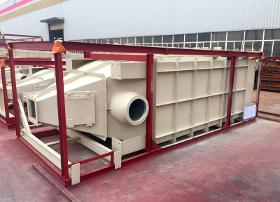
HAMON
Belgium
Using standardized material and equipment, having a compact design which reduces freight and installation costs, requesting a minimal space envelope, dedicated to the industry, placed as a stand alone or in a modularized assembly, the Hamon Fabric Filter is easy to install and operate. It meets the stringent efficiency requirements mandated by today’s environmental regulations.Products series allow selection for: a wide range of air volumes from 1000 to 45000 m³/h per unit, treat gas from ambient temperature to 200°C, , remove particulates load up to 30 grams/Nm3, ensuring emission efficiency up to 5 mg/Nm3
Request for a quote
HAMON
Belgium
The air from the Granulators and the Coolers contains urea dust that is entrapped in Hamon’s scrubbers. In these industrially proven impact type scrubbers, efficiencies are very high and dust concentrations lower than 20 mg/Nm3 can be achieved at the stack outlet. The total amount of urea collected by these scrubbers is recycled, for reconcentration, to the process.The same process is used to capture NH3 from the gases at the outlet of the Fertilizer Industry.
Request for a quote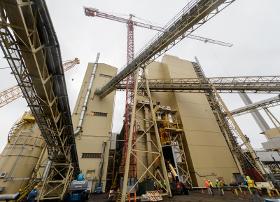
HAMON
Belgium
ReACT™ (Regenerative Activated Coke Technology) is an advanced multipollutant technology that achieves simultaneous capture of SOx, NOx and mercury in one vessel.The process was first developed in the 1970s in Germany, was subsequently advanced and commercialized in Japan where ReACT™ has been implemented at three large scale coal-fired power plants and at several steel mill and refinery applications:The 321-MW Wisconsin Public Service Weston Power Plant, Unit 3 is equipped with a ReACT™ system engineered and supplied by Hamon Research-Cottrell.Hamon Research Cottrell offers ReACT™ under a license agreement from J-Power Entech.
Request for a quote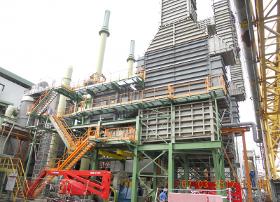
HAMON
Belgium
Besides primary measures, Selective Catalytic Reduction (SCR) is the most effective method for controlling nitrogen oxide emissions (NOx) from combustion sources. It is a commercially proven flue gas treatment technology that has been demonstrated to remove over 98 percent of the NOx contained in combustion system exhaust gas. The catalyst is at the heart of the SCR process. It creates a surface for reacting the NOx and ammonia, and allows for the reaction to occur within typical flue gas temperature ranges.Hamon uses a similar technology to reduce also VOC or CO content.Thorough knowledge in the design of all types of heat recovery systems including heat exchangers made of glass or fluoroplastic tubes to de-saturate the flue gas downstream a wet scrubbing system allows for minimum energy consumption when the flue gas needs to be heated.
Request for a quoteDo you sell or make similar products?
Sign up to europages and have your products listed
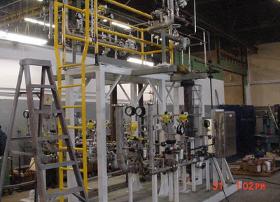
HAMON
Belgium
Selective Non-Catalytic Reduction is a post-combustion technology that is designed to control nitrogen oxides (NOx) emissions from boilers by the injection of ammonia or urea reagents into the flue gas.Hamon Research-Cottrell is licensed by Exxon Mobil for the application of ammonia based Thermal DeNox™ (TDN).
Request for a quote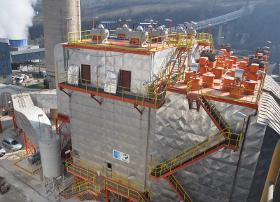
HAMON
Belgium
The Hybrid Collector is the combination of an Electrostatic Precipitator (ESP) with a Hamon Fabric Filter with suitable air to cloth ratio. In a Hybrid Collector, the fabric filter is located either downstream of the ESP or within the casing of the existing ESP by replacing one or more fields of collecting plates with the fabric filter modules. The Hybrid collector can help bring particulate emissions into compliance due to the fabric filter collecting higher levels of particulate, and finer particulate, than an ESP of an equivalent footprint
Request for a quote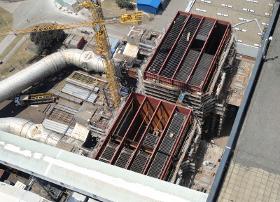
HAMON
Belgium
Since Dr. Frederick Cottrell's invention over a century ago, electrostatic precipitators (ESPs) have been a primary technology for controlling particulate emissions. ESPs can be designed to meet stringent particulate emission standards with minimal pressure loss and high equipment reliability for extended plant operation.
Request for a quote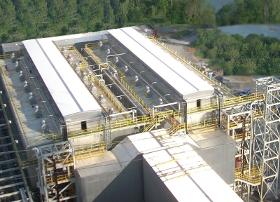
HAMON
Belgium
Hamon fabric filter systems are a major component of a long tradition of excellence. We combine more than 40 years of experience in fabric filtration including the latest approaches in low pressure high volume pulse jet filters as well as more conventional technologies such as medium pressure pulse jet filtration.Our engineers have designed and constructed fabric filters for a variety of applications, including cement, coal fired steam generators, stoker fired boilers, fluidized bed combustion boilers, municipal waste incinerators, cogeneration facilities, and industrial processes such as steel, rock products, aluminum, etc.A fabric filter system is very effective at the collection of fine particulates and metals. By using the appropriate fabric filter design (reactor type) and with additional sorbents injection upstream the fabric filter, air toxics such as SOx, mercury, dioxine,can be collected with substantially high efficiency.
Request for a quote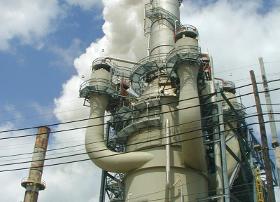
HAMON
Belgium
Dr. Frederick Cottrell developed the first wet electrostatic precipitator (WESP) in 1907 to control sulfuric acid mist from a copper smelting process in Pinole, California.Since that time WESP technology has become well-established in both industrial and utility applications around the world to remove sub-micron particulate, condensables, and acid mist as a final polishing device in an air pollution control system where an upstream dry ESP, fabric filter or wet scrubber cannot capture the sub-micron particulate due to its small size.
Request for a quoteResults for
Extract - Import exportNumber of results
23 ProductsCountries
Company type

